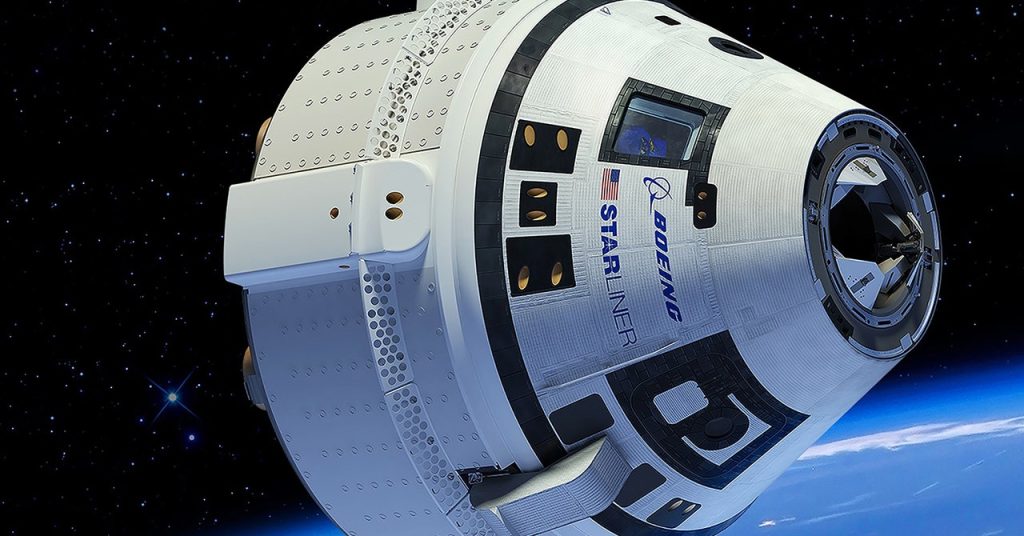Boeing’s Starliner Set to Embark on Crewed Flight Test Mission
The long-awaited moment has finally arrived as Boeing’s Starliner spacecraft is set to launch with astronauts on board, marking the culmination of a decade-long development process fraught with challenges. This milestone signifies the potential beginning of Boeing’s era of private human space travel.
Starliner’s Journey to the ISS
The Crew Flight Test mission is scheduled to commence at 10:34 pm eastern time, propelled by an Atlas V rocket. The spacecraft will embark on a 25-hour voyage to the International Space Station (ISS). If the mission proceeds as planned, Starliner will officially enter service as a human transportation vehicle for regular trips to and from the ISS starting next year. Boeing has secured six NASA flights, with the possibility of additional missions and even destinations beyond, such as private space stations.
“Having two different US-crewed vehicles is really important for us,” said NASA’s Dana Weigel, program manager for the ISS, in a news conference on May 3. “This crewed flight test is a critical stepping stone to reaching that broader goal.”
NASA’s Commercial Crew Program
In September 2014, NASA initiated the Commercial Crew Program, awarding contracts to Boeing and SpaceX to develop a new class of private spacecraft capable of transporting humans to low Earth orbit. The aim was to reduce reliance on Russia for access to the ISS following the retirement of the Space Shuttle in 2011. By outsourcing ISS missions, NASA sought to focus on its broader goals, such as returning humans to the moon by 2026 as part of its Artemis program.
“The whole concept is to get to a point where NASA is freed up to think about the next horizon beyond the space station,” says Daniel Dumbacher, chief executive officer of the American Institute of Aeronautics and Astronautics.
SpaceX’s Success and Boeing’s Challenges
SpaceX, which received an initial $2.6 billion as part of the program, has already fulfilled its side of the bargain. In 2020, its Crew Dragon spacecraft successfully launched its first humans to space for NASA and has since carried nearly 50 people, including government astronauts and private citizens. In contrast, Boeing, which received $4.2 billion, has faced numerous setbacks and delays. The company’s struggles have been attributed to a range of factors, including software issues, parachute problems, and multiple whistleblowers raising concerns.
International Cooperation and Future Prospects
Despite the challenges faced by Boeing, the successful launch of Starliner would represent a significant step forward for the American space industry. NASA and the Russian space agency, Roscosmos, continue to cooperate on the ISS program, sharing seats between Russia’s Soyuz vehicle, Crew Dragon, and now Starliner, despite the strained political situation between the two nations.
Beyond the six planned missions, Boeing has not announced any further flights for Starliner. The future of the spacecraft remains uncertain, particularly with the ISS set to be decommissioned by the end of the decade. NASA has been encouraging the development of new commercial space stations to fill the orbital research void left by the ISS, but the viability of this endeavor remains to be seen.
A Successful First Crewed Flight
As Boeing prepares for the first crewed flight of Starliner, the focus is on ensuring a smooth and successful mission. Once the spacecraft is finally in the skies with humans on board, it can begin to fulfill its long-awaited role in the era of private human spaceflight.

4 Comments
Finally, Starliner steps out of the shadow, ready to dance among the stars!
Starliner’s making a grand entrance, late to the party but dressed to impress!
Let’s hope Boeing’s Starliner doesn’t need a celestial GPS to find its way this time!
Starliner’s ready to catch up with SpaceX, or are we still playing the delay playlist?